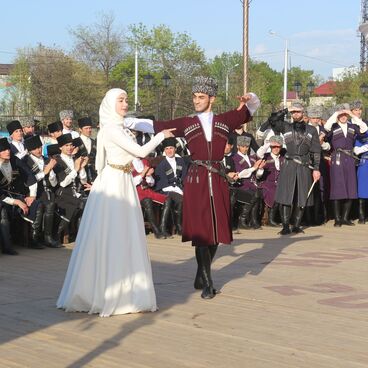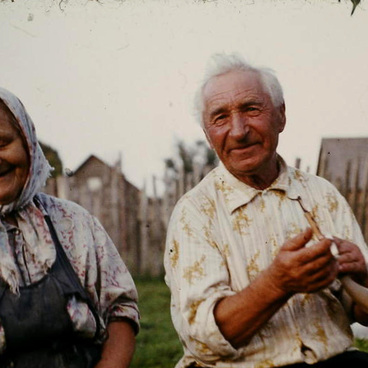In the traditional culture of the Udmurts, the celebration of Trinity refers to the turning points of the calendar — it marks the peak of the spring period, the heyday of nature. In Kukmor tradition, this holiday is called Semyk. Unbaptized Udmurts celebrate Semyk on Thursday, baptized ones — on Sunday.
There was a seven-week period of games and entertainment for young people before the celebration. During this time, spring songs were sung every evening in the villages. Young people gathered in the meadows near the village, played different games, and swung on the swings that were constructed on the Friday of the Easter week. While one couple was swinging, the rest danced in circles. There were two types of dances — in circles and in lines. When people danced in circles they were holding hands. A number of girls formed two opposite rows when dancing in lines.
The night on the eve of Semyk was considered the key turning point of the spring period: it was the time of saying goodbye to the spring. Late in the evening, young people gathered in the meadows, young men dismantled or broke the swing, which they later burned.
The whole next day — Semyk — was devoted to the deceased ancestors. After ritual ablution, the villagers went to the cemetery to commemorate their relatives. There they left pieces of cooked food (tabanyan), eggs, bread, and sprinkled the graves with grains.
The celebration of the Trinity ended the past seven weeks from Easter-Akashka. Grain crops began to sprout from the ground — it was believed that loud singing in the meadows, dancing in circles and swinging on a swing enhanced this process. And after the Trinity was celebrated, the time for the flowering of rye and the ripening of cereals came — these processes required silence.
There was a seven-week period of games and entertainment for young people before the celebration. During this time, spring songs were sung every evening in the villages. Young people gathered in the meadows near the village, played different games, and swung on the swings that were constructed on the Friday of the Easter week. While one couple was swinging, the rest danced in circles. There were two types of dances — in circles and in lines. When people danced in circles they were holding hands. A number of girls formed two opposite rows when dancing in lines.
The night on the eve of Semyk was considered the key turning point of the spring period: it was the time of saying goodbye to the spring. Late in the evening, young people gathered in the meadows, young men dismantled or broke the swing, which they later burned.
The whole next day — Semyk — was devoted to the deceased ancestors. After ritual ablution, the villagers went to the cemetery to commemorate their relatives. There they left pieces of cooked food (tabanyan), eggs, bread, and sprinkled the graves with grains.
The celebration of the Trinity ended the past seven weeks from Easter-Akashka. Grain crops began to sprout from the ground — it was believed that loud singing in the meadows, dancing in circles and swinging on a swing enhanced this process. And after the Trinity was celebrated, the time for the flowering of rye and the ripening of cereals came — these processes required silence.

